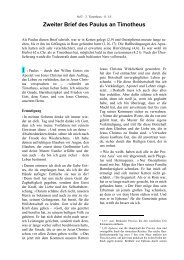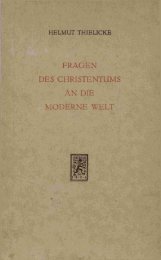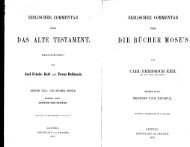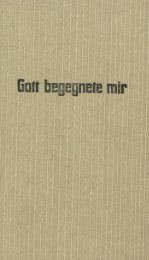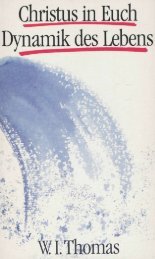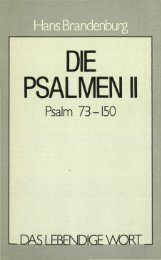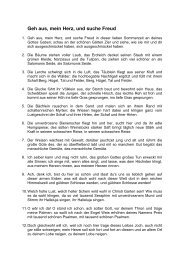Create successful ePaper yourself
Turn your PDF publications into a flip-book with our unique Google optimized e-Paper software.
One cell contains 32 pg (1 picogram = 10 -12 g)<br />
hemoglobin, comprising about 300 million molecules.<br />
This red pigment comprises about 95 % of<br />
the dry weight of erythrocytes. Interestingly, the<br />
32 pg per cell in an adult organism is practically<br />
a universal constant for the animal kingdom.<br />
In terms of volume the quantity of Hb is about<br />
140 g/l for adult women, and 160 g/l for men.<br />
Consisting of four pyrrole rings connected by<br />
methine bridges ( – CH = ), the heme has a bivalent<br />
iron atom at its centre. Oxygen can be<br />
attached to the central iron atom without<br />
changing its chemical valence. The Creator<br />
designed this amazing structure without which<br />
human life would not have been possible. Consider<br />
the following:<br />
Eosinophilic granulocyte Platelets (thrombocytes) Small lymphocyte<br />
The body thus has a total quantity of between<br />
700 and 960 grams of Hb available in its 5 to<br />
6 litres of blood. The percentage of iron in hemoglobin<br />
is 0.334 %, so that 3 grams, or 70 %, of all<br />
the iron in the body is located in the hemoglobin.<br />
Each of these Hb molecules is a complex protein,<br />
consisting of globin (Greek globus = sphere)<br />
which is connected to an iron-containing pigment<br />
component, heme (Greek haima = blood) by<br />
means of four polypeptide chains. Because of the<br />
four chains this protein is known as a tetrameric<br />
protein (Greek tetra = four). Two of these chains<br />
consist of 141 amino acids (the α chain ), and the<br />
other two have 146 amino acids (the β chain).<br />
The normal hemoglobin for an adult is indicated<br />
by Hb-α 2 β 2 or simply HbA. The exact sequence of<br />
the amino acids in the chains is of crucial importance<br />
for the structure of the globin molecule.<br />
Small deviations can seriously affect its function.<br />
60<br />
Normally, in the presence of water and oxygen,<br />
the iron in free heme is immediately oxidised to<br />
tri-valent iron (hematin); it cannot then absorb<br />
any oxygen. The Creator prevented this futile reaction<br />
by shaping the globin chain to form a protective<br />
coat. This chain also has other important<br />
functional properties:<br />
In the first place the absorption of oxygen is reversible,<br />
since it does not depend on a chemical<br />
bond. If a chemical bond had to be severed, energy<br />
would have been required. Secondly, the<br />
quantity of oxygen to be absorbed or released<br />
can be regulated, making it possible to supply<br />
varying levels of oxygen to peripheral <strong>organs</strong><br />
according to their physiological requirements.<br />
It can also be stated thus: Human life could not<br />
have existed without the finely tuned properties<br />
of hemoglobin, which are the result of its well<br />
designed molecular structure.




